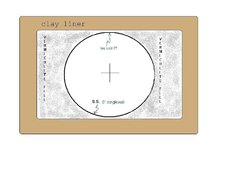We have a 24' vertical run of single-wall SS liner (6" rigid round) inside a clay lined flue. The clay liner I.D. is about 6.5" X 10.5"
and the SS liner has no insulation. The top 6 - 8 feet of chimney goes through unheated attic and above the roof, and gets too much creosote. Would there be a downside to pouring vermiculite down both sides of the SS liner in the dead air space between the SS and the clay? Is this likely to hurt the SS because it stays colder where it touches clay but can heat up where contacting vermiculite?
We can stop the vermiculite from going below the block-off plate by stuffing koawool or equivalent.
Second question- Is insulating the flue like this likely to noticeably reduce the creosote (top third of the flue) given the same wood and burning habits?
and the SS liner has no insulation. The top 6 - 8 feet of chimney goes through unheated attic and above the roof, and gets too much creosote. Would there be a downside to pouring vermiculite down both sides of the SS liner in the dead air space between the SS and the clay? Is this likely to hurt the SS because it stays colder where it touches clay but can heat up where contacting vermiculite?
We can stop the vermiculite from going below the block-off plate by stuffing koawool or equivalent.
Second question- Is insulating the flue like this likely to noticeably reduce the creosote (top third of the flue) given the same wood and burning habits?


